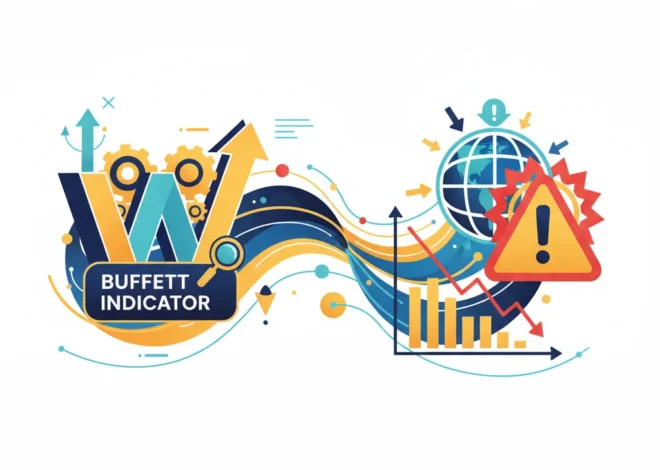
The Green Paradox: Uncovering the Dirty Secret of Clean Energy Investing
The Unspoken Contradiction at the Heart of the Green Economy
We are constantly presented with a vision of a clean, green future. It’s a world powered by silent, spinning wind turbines, rooftops shimmering with solar panels, and city streets humming with electric vehicles (EVs). This is the “green transition”—a monumental and necessary shift away from fossil fuels to combat climate change. For investors, finance professionals, and business leaders, this transition represents one of the most significant economic transformations in a century, a multi-trillion-dollar opportunity to reshape the global economy. But what if this pristine image hides a much grittier reality?
A recent letter in the Financial Times by George Lemos of Capital Finance Strategies touches upon a profound contradiction that the finance world is only beginning to grapple with: the clean energy revolution is fundamentally dependent on one of the world’s oldest and dirtiest industries—mining. To build the green infrastructure of tomorrow, we must first engage in an unprecedented global expansion of resource extraction today. This paradox creates complex challenges and unique opportunities for anyone involved in investing, banking, and global markets.
This article delves into this critical contradiction. We will explore the staggering demand for critical minerals, the environmental and geopolitical risks tied to their extraction, and the immense financial hurdles we face. Most importantly, we will analyze what this means for investors and how to navigate the complex, often murky, landscape of the green transition.
The Mineral Foundation of a Green Future
The technologies that define the green transition are not built from thin air; they are assemblies of highly specific metals and minerals. An electric vehicle, for example, is essentially a sophisticated battery on wheels, and that battery is a cocktail of elements like lithium, cobalt, nickel, and manganese. A wind turbine requires tons of copper for its wiring and rare earth elements for its powerful magnets. The scale of this material dependency is staggering.
To put this into perspective, the International Energy Agency (IEA) has modeled the explosive growth in demand for these resources. According to their landmark report, achieving the goals of the Paris Agreement would require a monumental increase in mineral production by 2040. Compared to 2020 levels, the demand for lithium is projected to increase by over 40 times, with graphite, cobalt, and nickel demand growing by around 20-25 times.
Let’s break down the mineral appetite of key green technologies:
| Green Technology | Key Critical Minerals Required | Primary Function of Minerals |
|---|---|---|
| Electric Vehicle (EV) Batteries | Lithium, Cobalt, Nickel, Manganese, Graphite | Cathode and anode materials for energy storage and stability. |
| Wind Turbines (especially offshore) | Copper, Zinc, Manganese, Rare Earth Elements (Neodymium, Dysprosium) | Wiring, coating, and powerful permanent magnets for generators. |
| Solar Panels (Photovoltaics) | Silicon, Copper, Silver, Tellurium, Indium | Semiconductors for converting sunlight to electricity, and conductive components. |
| Grid-Scale Battery Storage | Lithium, Vanadium, Zinc, Cobalt | Storing intermittent energy from wind and solar for grid stability. |
This insatiable demand is already sending shockwaves through the commodity trading markets and the global stock market. The prices of these minerals are becoming a critical factor in the cost of green technology, directly impacting corporate profitability and the pace of the transition itself.
Trump's Argentina Ultimatum: How One Election Could Reshape Global Finance and Investment
The Environmental and Geopolitical Cost of Extraction
The term “clean energy” conveniently glosses over the often-unclean process of acquiring its raw materials. Mining is, by its nature, an invasive and resource-intensive process. The quest for critical minerals involves significant environmental trade-offs:
- Carbon Footprint: Mining and processing minerals are energy-intensive activities, often powered by fossil fuels, especially in remote locations. The very act of sourcing materials for decarbonization can be a carbon-heavy process.
- Water Usage & Contamination: Lithium extraction, for instance, particularly from brine pools in regions like South America’s “Lithium Triangle,” requires vast quantities of water in already arid areas. There is also a significant risk of contaminating local water sources with chemicals used in the extraction process.
- Land Degradation: Open-pit mines, a common method for extracting copper and nickel, result in massive land degradation and deforestation, destroying ecosystems and habitats.
Beyond the environmental toll lies a web of geopolitical risk. The processing and production of these minerals are highly concentrated. For example, China currently processes around 60% of the world’s lithium and over 80% of rare earth elements, according to a White House report. This concentration creates fragile supply chains, making Western economies vulnerable to trade disputes and geopolitical tensions. Furthermore, a significant portion of key minerals like cobalt is mined in countries with political instability and documented human rights concerns, such as the Democratic Republic of Congo.
This geopolitical dimension adds another layer of risk for investors and corporations, turning mineral supply chains into a central issue of national security and international economics.
Wall Street's Paradox: Record Bank Profits Meet Stark Bubble Warnings
The Financial Bottleneck: Capital, Time, and Technology
Even if we could ignore the environmental and geopolitical issues, a formidable financial challenge remains. As the original FT letter correctly highlights, the green transition is “hugely capital intensive.” Developing a new mine is not a quick or cheap endeavor. It involves a decade or more of exploration, permitting, and construction, requiring billions of dollars in upfront investment before a single ounce of mineral is produced.
This long lead time creates a dangerous mismatch. The demand for green technologies is rising exponentially *now*, but the supply of the raw materials needed to build them is constrained by these multi-year development cycles. This supply-demand imbalance is a classic recipe for price volatility and supply shortages, which could stall the transition and fuel inflation.
The world of finance and banking has a pivotal role to play. Mobilizing the necessary capital for this new generation of mining projects is a monumental task. It requires innovative financing models, robust risk assessment, and a long-term perspective that can weather market cycles. This is where modern financial technology can make a difference, from creating platforms for syndicated loans to using AI for better geological survey analysis and project risk modeling.
An Investor’s Roadmap to the Green Paradox
For the savvy investor, this complex picture is not a deterrent but a map of opportunity. Acknowledging the contradiction allows for a more sophisticated investment strategy that looks beyond the obvious plays.
- Invest in the Entire Value Chain: Instead of focusing solely on EV manufacturers or wind turbine producers, look at the “picks and shovels” of the green revolution. This includes mining companies, particularly those demonstrating superior ESG performance and operating in stable jurisdictions.
- Focus on Innovation and Efficiency: The high cost and environmental impact of traditional mining create a massive incentive for innovation. Companies developing breakthrough technologies in mineral recycling (a field often called “urban mining”), less-invasive extraction methods, or new battery chemistries that use more abundant materials (like sodium-ion) are poised for significant growth.
- Geopolitical Diversification is Key: As nations prioritize supply chain security, projects in politically stable regions like Australia, Canada, and parts of the United States and Europe will likely command a premium. Investing in companies that contribute to diversifying the global supply of critical minerals can be a prudent long-term strategy.
- Demand a Higher Standard of Transparency: Push for and invest in companies that are leaders in supply chain transparency. The use of technologies like blockchain to track materials from mine to final product is no longer a futuristic concept but an emerging competitive advantage that reduces reputational risk.
The Point of No Return: Why Climate Tipping Points Are Reshaping Global Finance and Investing
Conclusion: A Clear-Eyed View of a Complex Future
The green transition is an undeniable and essential goal for the global economy. However, we must approach it with a clear-eyed understanding of its inherent complexities and contradictions. The path to a clean energy future is paved not with ideals alone, but with copper, lithium, and cobalt extracted from the earth. Ignoring this reality is a recipe for failure, leading to supply bottlenecks, geopolitical conflict, and unintended environmental damage.
For leaders in finance, business, and policy, the challenge is to manage this paradox. It means funding not just the green-tech darlings but also the sustainable and responsible sourcing of their foundational components. It means embracing the circular economy, investing heavily in recycling, and driving innovation in materials science. The green transition isn’t a simple switch; it’s a complete rewiring of our industrial and financial systems. Acknowledging its dirty secret is the first, most crucial step toward building a truly sustainable future.


